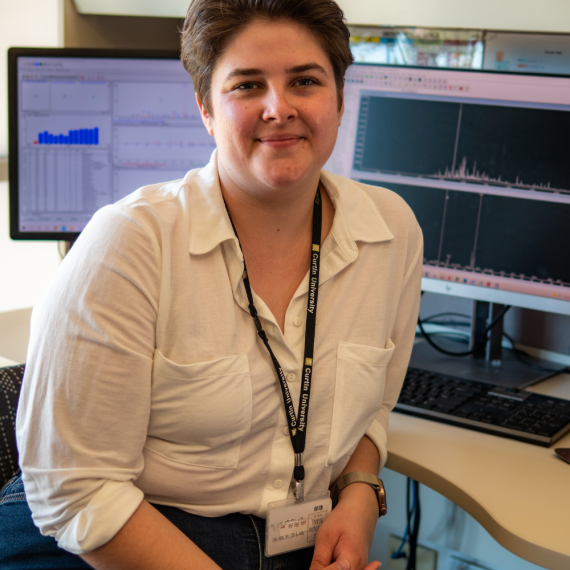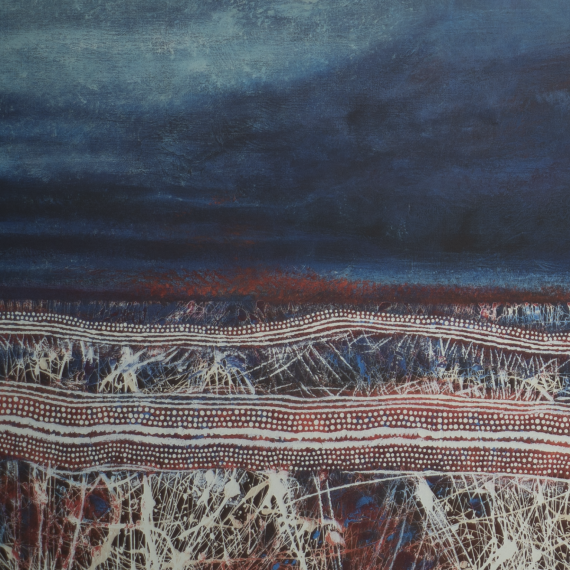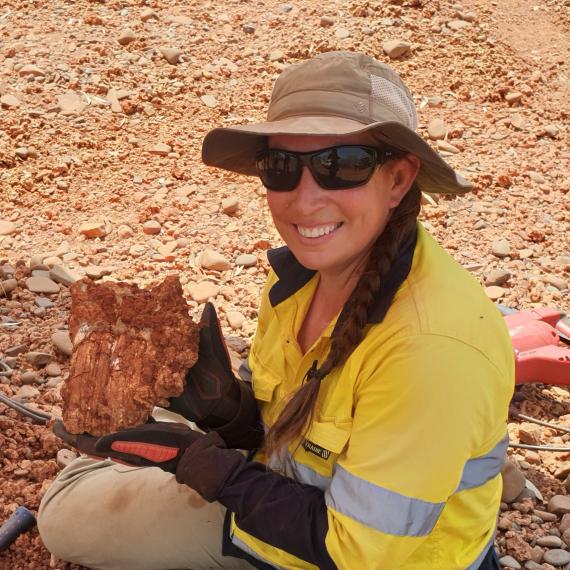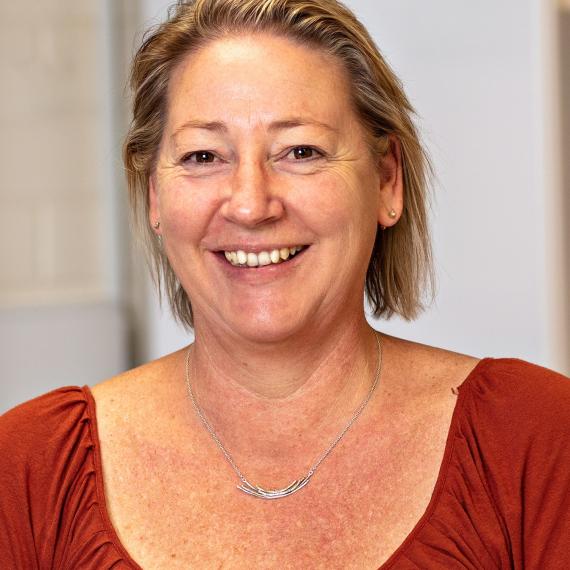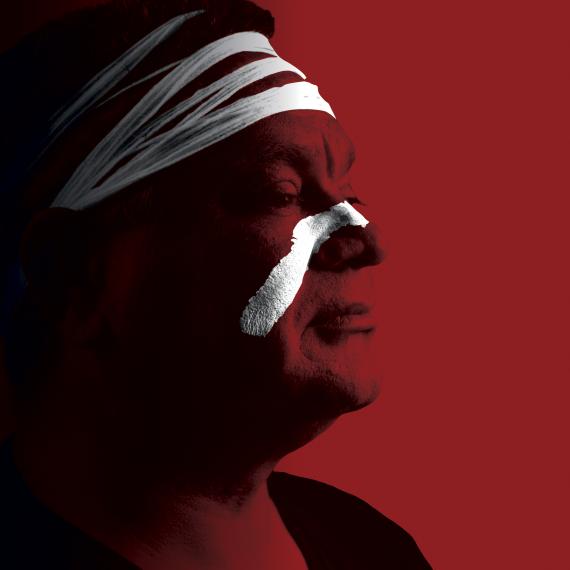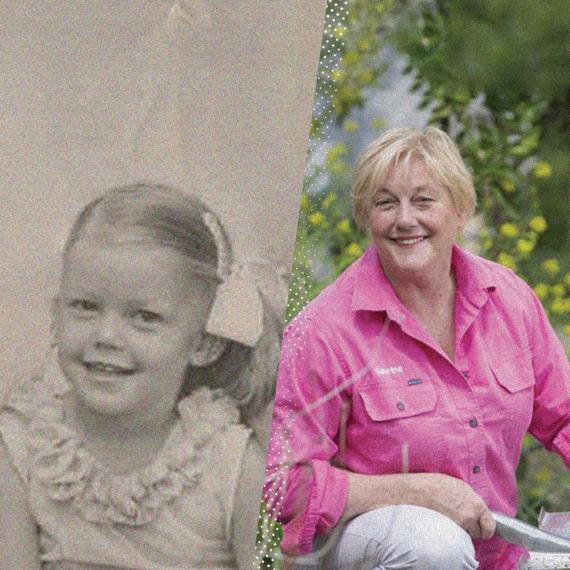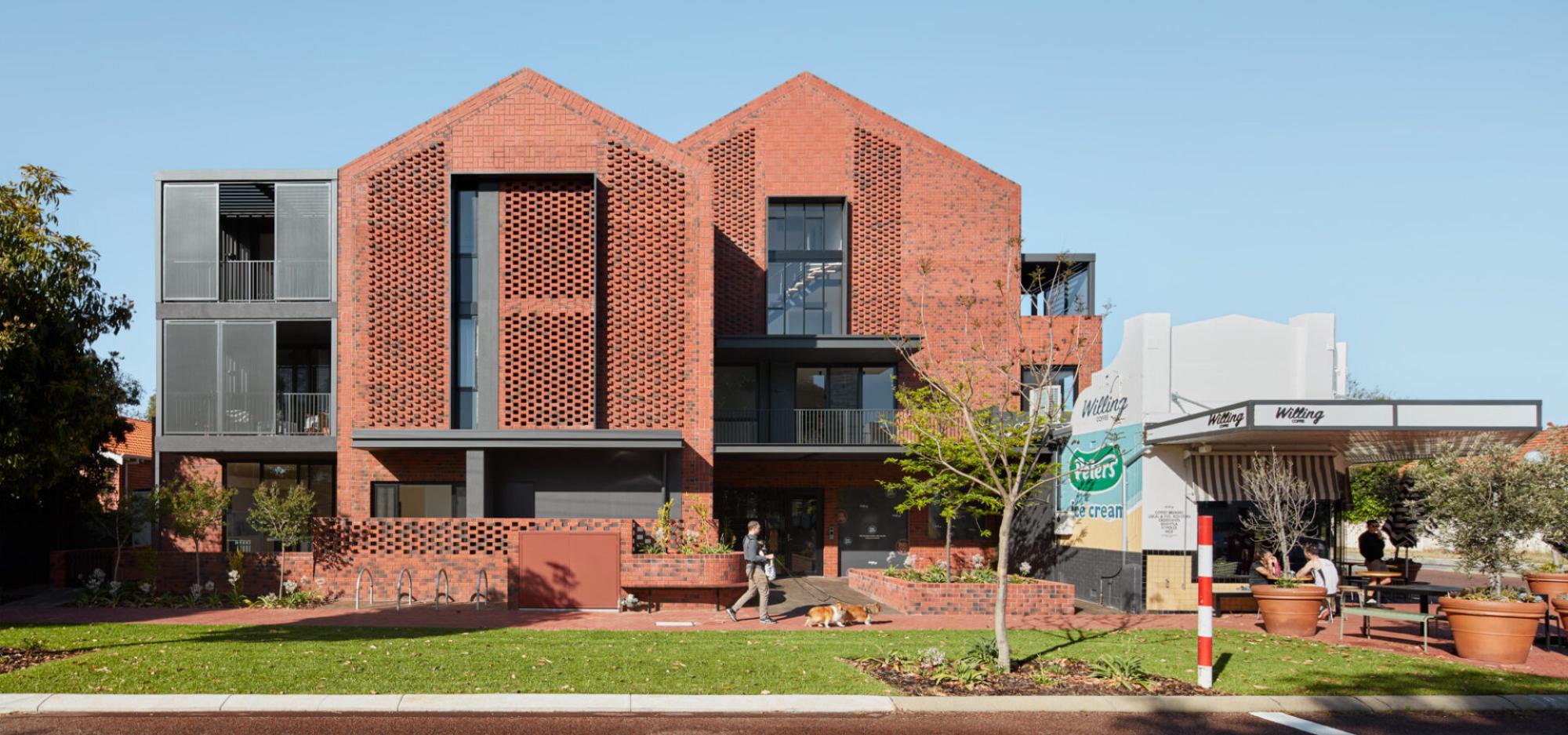
Developing Design
Good design is good business.
The idea of 'design' is commonly associated with ‘what something looks like’. While 'business' is associated with 'financial profit and loss'. But design is actually intrinsically linked with business in a number of ways.
Design isn't just an idea or what something looks like but a process. It's all of the decisions that are made and the thought processes along the way that lead to the success, or failure, of a project. It's a collaboration and a team effort.
Join us for a conversation with leading architects and the people who engage them, and hear the stories behind the projects.
Journalist and design champion Claire Tyrell moderated the panel conversation with:
Architects
- Jimmy Thompson, Design Director at MJA Studio
- Kate Fitzgerald, Director, Whispering Smith
- Monique Woodward, Director WOWOWA Architects
- Nic Brunsdon, Creative Director at Nic Brunsdon
Developers
- Brad Martin, Development Director at Fiveight
- Kyle Jeavons, Director at Hesperia
- Tim Willing, Founder at Willing Property
-
Episode transcript
Intro:
Welcome to the Western Australian Museum Boola Bardip talks archive. The WA museum Boola Bardip hosts a series of thought-provoking talks and conversations tackling big issues, questions and ideas and is delighted to be able to share these with you through the talks archive. The talks archive is recorded on Whadjuk Nyoongar Boodja. The Western Australian Museum acknowledges and respects the traditional owners of their ancestral lands, waters and skies.
Sandy:
Hello and welcome everyone. Thank you so much for coming out to Perth Design Week on a Friday night. We really appreciate you all getting involved in the conversation and design that we've got over the next week, and it's great to see a lot of faces in the room that have already started at eight o’clock this morning at the mark, and they're still out here tonight, so thank you.
I'd like to begin by acknowledging the traditional owners of the land on which we make the Whadjuk Nyoongar people, and pay my respects to elders’ past, present and emerging.
Well, thank you again. And now I'm going to hand over to Claire Tyrell who’s senior journalist at Business News, to look out to the panel conversation tonight and she's going to start with introductions to everyone on the panel.
So, I’ll leave that to Claire. Thanks, everyone. bye.
Claire Tyrell:
Thanks, Sandy for the introduction and welcome everyone. I'm Claire Terrell, senior journalist at Business News, and I cover a property, hence my interest in this topic this evening. Panellists, I've got questions for each of you, but I'd like the conversation to be pretty free flowing, so feel free to chime in if you have thoughts on a particular topic.
I'd also like the audience to get involved, so have a think of questions while we're going, and I'll probably get to those in the last fifteen minutes or so. We'll have a roaming mic. All right. Let's get into it. firstly, would each of you like to introduce yourselves briefly and provide a quick summary of where you fit into the topic of good design being intrinsically linked to good business? Start with you, Jimmy.
Jimmy Thompson:
Hello everyone, oops, alright, hello everyone, I’m Jimmy Thompson, so, design director at MJA studio. And I’m here, I guess, in terms of…
[audio issues resolve and volume increases]
There we go. Our studio predominantly does work in commercial architecture. And so, you know, a lot of our projects, whether they be hospitality or hotels and leisure or especially multi residential, have a commercial requirement attached to them. So, they're intrinsically linked with business. But I guess going back fourteen years from when we started the practice in its current iteration, the reason we've been able to grow as a business is because we've been able to demonstrate through design outcomes that commercial outcomes and end user amenity and the aspirations of the local community aren't actually mutually exclusive. And especially with, incentive-based planning policy, which came out, you know, a decade odd two ago, you can really demonstrate through good design that they're mutually inclusive. So that's what we like to do a lot of.
Claire Tyrell:
Great. Kate?
Kate Fitzgerald:
Hi, everyone. I'm Kate Fitzgerald, I'm the director of the architecture practice, Whispering Smith and also the co-founder of sustainable emerging developer, New Resident. I think where we sit in the intersection of design and business, and development is, is trying to sort of professionalize that lower end or the micro developer. I mean, there's some incredibly talented developers here tonight, but I would have to say listening to about 25 different property podcasts, that doesn't stretch to the to the lower end of the market. And I think that we see a way of, using our skill set, everything that we know and everything that we've learned in the, in the industry over the last twelve years to be trying to try and make a difference, in the housing market, especially to anyone who might be in a long term rental situation as it gets tougher and tougher for young people to buy homes.
Tim Willing:
Hello. Hi. I'm Tim Willing, founder of Willing Property. And, very happy to be here with, what is an esteemed panel and an exciting panel. Let's hope. But look, we're, we're developers, and, of residential, and that's what I'm very interested in is residential property and developing in streets and locations that, have got a high barrier to entry, whether it's through, planning controls or tight availability of sites. And, um. I'm only interested in building beautiful buildings and, and that's where the creative, architects that we work with, like Jimmy, so essential we need to create value. We need to create great emotion when people see our buildings and, it's something that, ultimately, we continue to do and, as we get, get larger and, and have a city that is growing as we do, we need to continue that life cycle of housing and excite people into different styles and different ways of living that they haven't traditionally contemplated. And I think the architectural process and really creating that rarity and that emotion that people feel when they see something beautiful is, is something that, we need to concentrate on as a developer.
Claire Tyrell:
Yep. Nic.
Nic Brundson:
Hello. Hi. Nic Brunsdon, Principal Creative Director, Nic Brunsdon Architects and, Director of Space Market, which is an urban program that pairs disused spaces with useful people. Firstly, want to say thank you all for coming out tonight. This is, really important that, like this, many people come and listen. This is what design in Perth is actually about. People turning up, listening, going and telling their friends, trying to change things through the projects that they're working on. Learning, pushing, striving for more. For me, the concept of good design, we always talk about the idea of not being problem solvers, but opportunity creators and that's how we try and think and bring, you know, our kind of skills or talents or what we do with our projects is that we try and be additive rather than, you know, kind of, well, other than being an expense side of the balance sheet, we try and be, a revenue side.
Monique Woodward:
Hey, my name is Monique Woodward. I'm the Director of WOWOWA Architecture. We're a Melbourne based practice with a, um, presence here in Perth. We've been in Perth for two years, um, but working, predominantly on east based projects. And so, I went for a swim the last few days and very determined to get some more projects in Perth. But essentially, our practice is sort of, split into two parts. So, we do a lot of, beautiful, colourful, yummy houses for rich people, essentially, that funds a lot of the pro bono work that we do. We do, a lot of government schools and, multi res, a bit of student accom. But for us, our practice is B Corp certified and so we meet the highest global standards of environmental and social sustainability. And so, for us, good design is around ethics. We do, you know, very beautifully textured, colourful work. That's what we're known for. But it is sort of really underpinned by the value of, you know, good design, obviously, but the value of, ethics. So, we, have, almost started a construction on a Nightingale project, in, in, in Melbourne, we were part of the inaugural, Nightingale. And so, for us, providing, social housing is really important. And having that subsidized, and working with Breathe, who are the founders of the Nightingale model obviously and trying to bring that, to Perth in a, in a meaningful way is something that we're really passionate about. And working with, you know, you know, developers that, you know, there's synergies and alignments there so that's what we're here for. So, anyone hit me up, it's on.
Kyle Jeavons:
I'm a director at Hesperia, and we're a Western Australian development business and we focus on basically precinct based, projects and they range from everything from larger healthcare projects to residential apartments, tourism, hospitality. So, we've sort of got the, I guess, the benefit of trying to create these fine-grained sorts of environments, but at scale as well. Um, and Western Australia in particular, I think the, the ability of, I guess the group, when this is purely our focus is that it allows us to understand the city. It's very immature in many ways and probably like Kate touched on, there's a big differential between what's good and bad. And we've got a really long way to go. But as with many of the people on this panel, we're, I think extremely fortunate that it's a great time for us to to be here to try and make a big change moving forward.
Brad Martin:
Thanks Kyle. Ah, Brad Martin, I am a Development Director at Fiveight. Fiveight is the property development investment company for the Forrest family and very fortunate to work on a diverse range of product, projects from very, very small to quite large and hopefully very impactful projects. Our mantra is really around creating iconic projects that are really representative of Australia, um, and that iconic doesn't mean its ego led. It really just means that we're extremely proud as Australians to own develop these projects. And so, part of that is obviously having an excellent design that reflects who we are as a people and who we may be in the future.
Claire Tyrell:
It's not… oh here it is…
Thanks, everybody. we'll start with you, Brad, since you're talking about iconic projects, through Fiveight, you've worked with a range of architects, including an international architecture firm for Carillion. How do you go about choosing architects for projects, and can you elaborate on the commercial value in architect selection?
Brad Martin:
Yeah, absolutely. Very fortunate in that our board and shareholders are extremely passionate about design and what that enables us to do is have the opportunity to run design competitions and design competitions, paid design competitions are important because you get to see varying architect's response to site conditions, constraints and potentially identify opportunities that you haven't been able to identify. And I think that really relates to next point around architects bring value. So great design brings additional value to a project. We've all seen, great development go up and its miles apart from what might be considered poor aesthetic development that has little benefit to the community. So, for us, choosing the right architect is critical. They are ultimately the fate of the future development. They are what will stimulate discussion, good and bad, will stimulate interest in a project. And. We've been very fortunate in, in Carillion to go to through the original design competition, both international and leading national practices. We felt that in the case of Carillion, an international practice was going to best, respond to the site and our desire for that site and we've managed to partner them with primarily local consultant team after that. So, I would never recommend, international solely. I think there's absolute benefit to international insight. But the local context is critical because if you are using an international and they're coming to you with ideas from other countries that just don't, flow with how we live and how we interact and how we build community, community and generate community, um, the project won't succeed. And obviously that's bad, bad from an investment position.
Claire Tyrell:
Thank you. I'll go to you now, Jimmy, we've seen a real shift in recent years to an emphasis on architecture and design in the marketing of projects, particularly in the multi-residential space. Can you speak to this and about how this situation compares to what it used to be like and how this shift has helped communicate the value of good design?
Jimmy Thompson:
Yeah, it's a good question to sort of pause and reflect on. Umm, what it was like sort of fourteen, fifteen years ago with projects like this where, to a certain extent, the people who were buying apartments kind of had an apathy around design. There wasn't a lot of communication around the value of design. The, there was really simple things about access to light, natural ventilation, simple elements.
Um, but what happens really in, in, in the sort of around 2009, 2010, you had the advent of design review panels, and you had incentive-based planning come into certain areas. So that's where design review panels, could award design excellence, based on end user amenity and sustainability outcomes and community benefits. Um, and so developers could get extra yield on sites and potentially extra height and that was a really interesting moment where suddenly you could… the developer would sort of leave you alone and let you do what you do best, because they would understand that you can talk a language with design review panels, and they could trust that you could kind of get good outcomes. Off the back of that I guess, project by projects, we were able to get new elements in, in incrementally improve the general standard of multi-residential apartments in Perth. And then with that, the buying market also started to appreciate things. So, things that we used to fight really hard for suddenly became accepted norms and you can move on to the next thing, whether that be PV or battery or dual aspect apartments, all the things that can make apartments great. Um, and then off the back of that, suddenly, you know, the DAP system almost started to do our marketing for us because developers could say which architects were being able to create great buildings, but also getting really good commercial outcomes and that's kind of the challenge for architects is we've got responsibilities to clients, we've got responsibilities to the general public and the community and the places that we live, but especially to the end user. So when design reviews panels really came in, if you could do all those things, suddenly you're a much more marketable person and suddenly you're able… and you start to see developers using architects as branding elements within marketing in terms of the collateral that they would create and then now that's become…. sort of snowballed and snowballed. Um, and I think especially when there's international people involved as well now, which is good to say, because suddenly, you know, developers and the general public are starting to see the value in design, and that there's…. it's not just in how we can create great living environments, but it's also the potential to help their projects get off the ground.
Monique Woodward:
Can I just, interrupt the conversation around international architects? Like, I see absolutely no need, sorry this is off script, absolutely no need to engage with international architects. We have such a strong design culture, and presence in, um, you know, in WA, in, uh, over east, um, we have, the most incredible array of visual languages, you know, here on home turf and, I don't know, I think it's just such a, um, you know, with all due respect, like such a fallacy to think that, you know, the cultural centre is somehow the answer.
I think that we have everything that we need here, and, you know, from, from our perspective, like, we're a firm that's been around for twelve years. So, we're considered an emerging practice. And so for us, you know, we just finished working on a big competition with DKO in Sydney as part of the design excellence, um, program that they have there or, you know, competition, um, structure that they have, which is, you know, has its, has its sort of, flaws, as well as its sort of big wins. But, um, you know, I say that there's huge value in like, big, you know, big established practices working with emerging practices, to actually keep it fresh and to bring that, I guess new design energy and, and, I've spoken about this a lot, on the Design Excellence Advisory Committee as part of the City of Melbourne. You know, I just see that there's huge benefits to that. It doesn't need to be an international, a star-chitect who’s probably just real fancy and that actually by celebrating local homegrown, architects I see huge value there. Yeah.
Jimmy Thompson:
So, it's an interesting point. And I typically agree with you, but there has been examples where here, like Forbes Residences with Whiteheart, they were able to suggest stuff and get stuff into the design that we couldn’t push local developers to. They were able to really turn the needle a fair bit more than we had been able to do in the past. So, I think, like, there is a place at some point to help us actually, win arguments…… [ cut off by Monique Woodward]
Monique Woodward:
But maybe there’s like other levers that you could use to, to be able to get that over the line if, if really that's just a lever issue. Yeah, and believing your architects and believing in their capacity to, to do good architecture and actually like having the faith that they can, you know, work in that space.
Brad Martin:
I'm happy to agree, you know, that we, we have such a fantastic design community, and we have architects doing work on a global scale that are Australian based. I do think Jimi's points valid, though, that every now and again there's a new idea. That's not to say that a local practice or a national practice couldn't have had the same idea.
Um, but it is challenging everyone to have a new entrant do something different. I would hope that what we've proposed for Carillion is different. Do I think we could have got an equally exceptional outcomes from a national practice? I think we probably could. So, it's just something, it's a different perspective being brought in. Yeah. I, I, I wouldn't necessarily advocate dealing with an international practice, this comes with other challenges.
I'd much rather someone in Perth, who's office, I could go and sit in and work with them one on one, rather than have to time it so that our night and day overlap properly.
Claire Tyrell:
Thanks, guys. It's good to see so many, interstate and international architects here in Perth design week as well. I will change gears a little bit. Tim, your recent projects highlight how density can be incorporated into established suburbs with a focus on quality. How have you worked to maintain the character of these suburbs as you create more multi-residential living options?
Tim Willing:
Yes. Thank you. Claire, I think, look, what I like to do is, is look at, um, the streets that we're developing in.
And as I've talked to, they’re, they're are typically streets that might have been…. They’re well be built up and have been some more than a hundred years and I like to sort of think about how, ah, the buildings could have evolved if, say, it's a federation area where typically we're developing, if that continued and, and imagined apartments, in that era and, um, I think we look at civic buildings and, a lot of the classic hotels that were built, you know, in the sort of turn of the century or into the 1920s and so on. And, and that's something that we, ah, speak about with, with Jimmy, there's a lot of, civic buildings, for example, or spiritual places of spiritual, ah, ah, eh, I suppose. And so, I think that that's, that's the first point of call for us and the references that we use and then how they were reimagined for today's, purposes. Um, I think it's about building trust in the locations that we are in. And I think that, Jimmy mentioned the architects that you work with and the quality that you're seeking. and through the design review panel process, you can, establish a certain credibility, ah around, doing what you say you would do. And, and it's so rare in our business that people simply just do that and I think that, you start getting a certain, belief that you can make a difference and, and build buildings that, that are quite beautiful and quite different in, in areas of rarity and where there is need and, obviously working with the architects and, and the great creatives that we do have here, allows us that conduit to, to capture the value that we need to, to make the projects viable. And so, it's, it's building the trust not only with the buyers, but with, with the planning, authorities.
Claire Tyrell:
Do you have any thoughts on this, Kyle as well? I know Hesperia’s done a similar thing in incorporating developments into suburbs.
Kyle Jeavons:
Yeah. Look, I think I mean, probably to Tim's point I mean, I'll look at some of the work he does and, you know how challenging these projects are. So, without question, to build the brand and the trust in, you know, certainly from an architectural and design perspective is just so critical when you start having repeat buyers. Um, from a precinct perspective, again, we've, we've always had this challenge, you know, we've got a car city built of the... ha, we can talk about it till the cows come home but, the Hepburn Stephenson plan and we're not that well connected. So, to deliver projects in these, you know, Leederville, um, Fremantle, Gloucester Park, these Murdoch precincts, there has to be a point of difference in some way because financially they’re, they’re so challenging. So, I think again, it's continually trying to build trust of whether it be health care operators, apartments, hospitality. But most of it comes down to I think, and Tims point again, environmental psychology. It's like, what do you feel when you're in a place? And I think that's probably the strongest asset we all have that. It's easy to walk down the street and start to analyse why does this work and why doesn't it? So, I think a lot of that work is, I guess, qualitative in some ways and quantitative in others. But, you know, there's huge opportunity here. But again, it's still it's a hard place to do business.
Tim Willing:
Indeed. I think talking to, to place and, and that's something we've been very focused on as a developer also is, is, you know, those chance encounters that we all, so cherish, whether it's at the coffee shop or at a wine bar. And I think that's something that's, that's brought about a difference for us in, in the places that we're developing that we own and operate those hospitality ventures as well. And, you know, developers they’re, they’re… we're not well liked typically, um, and… But it's I think there's great joy in creating places that people love to, to visit and, and, and that's our job really is to really excite people and get them out and contemplating new ways of living and new ways of running their days.
Claire Tyrell:
Yeah. Thank you. I’ll go to you now Kate and I saw a panel this morning with you talking about this, so I know you're across it. Can you talk through the economics of medium density? So, switching gears slightly, and what designing and developing projects taught you about the financial viability of emerging housing typologies?
Kate Fitzgerald:
yeah, I think you could echo that, that it's it's been a very tough, housing market here for a very long time.
It's been flat and to do something great during that time, I think is a testament to the developers and architects on the stage. Um, and I guess we're, we're, we're looking at it from our experience in the single resi market and then trying to work out how we could crack into this medium density space. Um, we actually really started off designing our own triplexes at the very, very beginning, doing a sort of micro, house-apartment hybrid and having to duke it out the City of Stirling at the time for two years to get that project through. And I, just coming from the eastern states originally, I couldn't believe it. I just thought, why? why? This just makes so much sense. I'm using less land, I'm keeping trees, I'm doing all the things that a developer should be doing, and I'm being treated like I'm a criminal and I just found it very strange. And at the time, I think the, um, volume two of the, the Apartment Code was going through, and I saw that, that process and I thought, oh, hang on a minute, there's a real opportunity here for us to shape, for architects to shape the next one, which is medium density. And they did, and we all did. I think everybody, it was one of the most widely consulted planning policies in the country, um, and it, it had incited a significant series of levers that would allow you to deliver incredible yield on sites as long as you gave something back to the community. A mature tree, um, saving a character home or needing to sort of develop a lot that would be otherwise almost undevelopable, umm, and it was basically saying how can you take something like, an existing character area which is North Perth, or Mount Lawley, or Scarborough, or Yokine, or any, or Dianella or any of those places where the R30 or 40 zones exist, and how can you deliver really, incredibly relevant housing for those areas and deliver diversity and choice? And how can you do that in a way that you don't destroy the character of that area. Like we have, we've tried infill before, and we have historically absolutely failed at it, if you have a look at places like Nollamara.
And so, as a practice, we were gunning with everything we had to try and figure out a way to deliver this architect developer mix, because we felt that the lack of expertise and professionality in the lower end of that market, and also the property spruikers.
[puts on character voice to imitate a property spruiker] “You know, you just give me your super and I'll go out there and I'll make you 10%, you know, per annum”.
That just is gross and, it's delivered as poor outcomes and it's, it's delivered by people who don't give a shit about the people who live in those houses. And so, we were like, okay, we can have a crack at this. And it's been doing “feaso” after “feaso” after “feaso” [feasibility study]. And I'm sure these, everyone here knows what, what those are, and trying to get them to stack up even in 2018 and 2019 and seeing how they didn't and working out, well maybe if we keep a character home, we can actually make this work and if we built… we'll give the character home back to the community. But then we'll build a three-story tower at the back that's very, very small on footprint and we started to fight and fight and slowly we got them to start working. And I'm pretty excited about seeing that evolution comes to life as we get the MD code back.
Clair Tyrell: Thats's great. Nick, do you have any thoughts on this one? I know you're pretty well known for your resi development.
Nic Brundson: Uh, I’m partly covered by an NDA that I can't talk about…
Audience:
[laughs]
Nic Brundson:
…. too much but also with the greatest respect to that question. Um, I’d also, like, just to ignore it completely, if that's ok like, um, for three reasons. Firstly, this is a really large panel, and I'm only going to get one chance to speak. Secondly, I'm kind of sick of talking about myself. And thirdly, there's one big point I wanted to make tonight and I've never done this before, but I've actually made notes and it's on my phone. I'm just going to… it's going to…. I'm gonna start…. I'm gonna start pulpitting here a bit. So, I just wanted to reframe… this won’t take too long, I promise. I just wanted to reframe the thing, which is, it's not actually that its good design is good business. Its actually just design is good business and so I have to look at this because I've got a whole bunch of stats and I would have forgotten them all, but the WA creative industries contribute $3.3 billion to the WA economy. We're the 14th highest contributor to GDP. And that's just us. That's not actually when you start adding the developers and the real estate industry to that. So, when you put creative industry with the development industry, which is what we're here talking about tonight, it becomes wholly significant. Um, we, the creative industries employ 4.5% of total state employment. So that's one in every twenty people works in the creative industries, in design, which is huge. and 88% of those industries are located here in Greater Perth. So, they’re like everyone that we walk past every day. But here's the big thing that what we build, what we permit, that tells us who we are, it tells us the standards we're happy to accept. And in the built environment, it's being governed by the inter-compliant pathway rather than the design led or design principle pathway. This is because, you know, the regulatory bodies and developers, you know, at the lower end, they prioritizing certainty over goodness. And that's the problem. The systems system is happy to accept something bad that we know rather than something that we don’t know.
Um, so this is my biggest bigger point is it has happened is I think we don't, as a design industry, have a unified voice. We're not meaningfully in the corridors of power shaping, policy directing, decision makers. Um, and you just have to look to the mining industry, the health industry, or even the housing industry to see how they actually work as well-oiled machines. Clear visions, they know who to talk to, they know how to get the right outcomes. So, for us, and if there's a takeover tonight, I'd like to pass on to everyone. I think it's time to fix that. We need to wrap our arms around people like Sandy and David and anyone else who's actually out there bringing the community together to have these conversations, to actually have these forums to get us all informed, to get us unified. Anything we can help to do to legitimize these people and these things with hard data, with precedent, with projects, all the things that everyone's doing together, work that Kate’s doing like that, you know, Fiveight, Hesperia
Willing, everyone, that's going to be the most important thing. Um, and another reason why design is good business is that the design industry, we pay our taxes here. We, as a design industry, we're investing in and invested in this state. The future of this state, the vast majority of practices are small. They invest and reinvest into the communities they're in, and their local communities and that's all for the better. We live here, work here, shop here, raise our kids here, have our families here. So, like, in Perth, we still see ourselves as this monolith, like, you know, at the airport, it's all mining ads, it's really embarrassing. But we're not, we're globally connected. We're on GMT +8 [time zone], we're part of 2 billion people, a global community. 25% of the global population is on GMT+8. That's the opportunity. Proximity is prosperity. And you just look north look to the early adopters and look to the designers. That's my peace. Thanks.
Audience:
[claps]
Claire Tyrell:
Thank you. I think it's a good time to go to the audience for questions. We have a roaming mic, do we?
Unknown:
Any questions?
Claire Tyrell:
There's one.
Audience member 1:
Firstly, to all the panellists, thank you guys. You guys have been, you know, really informal, um, informative rather on you've said so far. Sorry. It's been a long day. Um, I suppose this is open to all, but perhaps more so the developers. I come from an architectural background as well, but I find myself as a design manager in the construction side of things. So, I sit between, in a very obscure space, between architecture and I suppose, the development side of things. Um, and it does sometimes pose challenges purely because I think that there's a bit of a dichotomy between the business side and the design outcomes. Would you say, good business, and flipping it on its head here, leads to good design by means of, you know, procurement in terms of whether it's design, contract, ppp’s or, construct only kind of arrangements where the architect and the builder are a lot more involved than they typically would be. And that's open to anyone to answer.
Kyle Jeavons:
Yeah, I can probably give it a go. I mean, the I guess the challenge and again, thinking about our business, we work across all different asset classes and, you know, heritage buildings have a certain procurement strategy. You know, a hospital has one, apartments have one. And we try to systemize things in many ways, but it continues to feel like you have to do it on a project-by-project basis. Without question, building relationships with the builder, and in again, in our business, we use the three main builders here, and they're the larger ones because they understand how we work. The architects, we obviously use MJA, Hassle and this probably goes to some of the challenges of thinking about how we bring smaller practices, different practices into our business that it can take a level of courage to do it. But then sometimes you always, well not always, often go with, you know, the devil you know because it works well, and you understand how each other works. So, I… and again I… Tim is, without being disrespectful in any way. Tim's a little bit older than I am…. [continues after audience]
Audience:
[laughs]
Kyle Jevons:
….and if you looked, if you look back ten or fifteen years, you'd probably count the developers that still exist in Perth on maybe two hands, max, I would say…. [continues after Tim]
Tim Willing:
Yeah
Kyle Jeavons:
….. so, it's, it's always hard.
Tim Willing:
Yeah. Look, it's, it’s, it's, no doubt it's a tough business. And look, I'm trying to sort of get to the crux of that question because for us, we evolved to become a constructor in the last few years. And I think this talks to a big part of a challenge of supply chain and delivering and certainty around the product you're trying to deliver. And it's, we've gone so far as to even employ our own bricklayers directly now, to, so we can actually have a very different outcome.
Because our buildings and brick laid, it's a signature and, er, we, er, I, when I look back at what builders used to do, that's what they used to do forty years ago. And I think that, you know, I'm interested in how we evolve that when you get back to supply chain and procurement, it's, um, we do things in a manner that's quite traditional and albeit brickworks very traditional, but there's other elements of the buildings that that aren't. But one of the challenges as a, as a developer and as a builder is when you're trying to get different outcomes, beautiful design-led outcomes on a, in a scalable way that, you can actually… people can still afford, and you can still make money, it's very hard for that to translate to the site and to the people that are actually delivering on the sites. And I think this is where we often end up with quite dumbed down, for want of a better expression, outcomes. Because we often revert to, to methodologies that really need have passed the time. And so, I think procurement, we're all looking at, at, at different ways of doing things. We knew the model was broken and from, from a builder relationship perspective and we're certainly looking to change it.
Monique Woodward:
Hi. one of the most enjoyable projects that we're working on at the minute is, with a client, that's builder-developer. Theres, we're doing fives little, student accom in Carlton, which is in the inner city and, it's, it's been such a joy because they basically come with this is the methodology. We had an interview, and they were like, we just want you to do what you do best. the urban strategy, we want you to make it pretty, you know, and we're going to come with the parameters, and they've already worked out so much, and it's so liberating to actually just bring good design, without having to, you know, they've already worked out where the scaffolds going, etc..
And so, for us, that's, you know, a huge example of, the tightness of the relationship actually working in our favor. and they're willing to take a chance on an emerging, emerging architect because, they've got so much sorted.
Tim Willing:
Yeah. Look, I think we've recently, to, to expand on that a bit. We've had Jimmy's team down, um, we've had, Copper Davies team down to sites to sort of walk through the process on sites, because often we don't realize how challenging it is on sites for guys to deliver. You know, we know that the documents, it might be four hundred, five hundred pages and, people trying to sort of take those time and price them over the, you know, it's, it's difficult. And, so there's a responsibility from our side as developers, as builders. But also, most importantly, the architects and the creatives as to how the documentation is articulated as well as is, is so critical to, to the outcomes of good design and, and making design more normalized and, and er. I think that's the great opportunity in Perth is it's, it's so poor for so long and it's, it's we're lucky here that it's, it's actually easy to stand out if you do something actually just well, and that should, that's, you know, we can reach well above the minimum standards. And that's, my thought.
Claire Tyrell:
Jimmy?
Jimmy Thompson:
[laughs] sorry [laughs]
Claire Tyrell:
did you have thoughts on that or are you just grabbing it [the mic] for the next one?
Jimmy Thompson:
No, I do have thoughts, it was mainly, like, around procurement and, you know, probably over the last fifteen years, 90% of our projects have been D&C, or design and construct where we get novated to the builder. But there's always an early ECI process and while that for a long time is, is a bit of a dirty word, and it's sort of associated with poor design outcomes and sort of cost cutting, and, you know, we found that it's probably the, one of the examples where you really want to have an architect who really designs, like, they gave a shit and actually cares about the outcome. So, they keep working collaboratively through that process. But holding on to the things that are actually important Because so often the things that you fight hardest for the things at the end of the day where everyone stands it back and go, oh, that works really well. And looks really cool. And you got, yeah, that's why we fricken fought for it. But it's really important to have people who, you know, just happy to collaborate and be involved have really good input on design methodology, construction methodology so that I can get integrated with the actual end user outcomes. So, we found you can make it work.
Clair Tyrell:
That's great. Any more questions from the audience? This one towards the front
Audience member 2:
Um, Hi. Very Interesting conversation so far. I'm just wondering whether, to what extent design has been driven by, climate change reality, and whether any sort of evolution in good design, has been, maybe, driven more from, a consumer point of view or from regulation, government regulation, or from what designers and, and, and construction companies actually driving. I'm just very interested in that. Yeah.
Nic Brundson:
Juan just whispered in my ear to do a plug for New Normal Perth. So, we're a part of, for those that don't know, New Normal is a, a development strategy that's been set up in Melbourne to pivot greater Melbourne is in the whole urban area from an energy, sorry, a carbon consumer to an energy producer, and it's taking pilot projects, doing full environmental studies on them and showing how you can actually, with current technology, current feasibility, kind of cost neutrality, take them from, you know, businesses usual to, you know, things that actually benefit the future of, our societies. And so, we have brought that to Perth. We've got a, initial pot pilot project with sort of an offshoot of Hesperia, and a bunch of others that have been semi-committed, and we're looking to kick it up again this year. But things like there, there are programs, like the technology exists just about actually, like, Ro, so Ross Harding from Finding Infinity, who started this, he always talks about, it's not about, the question isn’t about what, or no the why anymore. It's about the how. Like the conversation about climate is sort of, you know, it's over. it's happening. So how do we fix it? And so, things like, New Normal, do that. And I think it's also just normalizing the, those conversations in our projects. Like we, we presented a project yesterday for a, one of the largest social housing providers in Australia. And we basically threw everything at it, you know, like full, you know, like full disability access, mobility, community sustainability, all the biggest things that we just try and do as base level now, they're not nice to have. They're just imperatives. And, you know, you can be a bit sort of worried about that at first at how it's going to be received. But at the end of the presentation, they were just they said, like, this is now going to form the basis of our policy. We're going to like change all our internal policies and every development now needs to meet these standards. So, I think it's about leadership in this room and everywhere about actually just saying, like it's not a nice to have. It's, it's, has, it's imperative now.
Jimmy Thompson:
I just wanted to add around the importance of design life in buildings. So, buildings that people love to live in and love to go, occupy are going to last for a lot longer because people are going to look after them, take care of them.
A huge amount of waste and energy gets put into building buildings and operating buildings. So, you've got to think about operating costs over an entire design life. And I think this is important for developers because it's something that they can talk to future residents about, is how the quality of what they're delivering, how it can actually reduce operational costs to the user over a long period of time. And these are the things that you just need to communicate, the value of design and what it can do.
Claire Tyrell:
Anyone else? Anymore questions? Theres a couple here.
Audience Member 3:
Um, thanks panel. My names Tom, Tom Chard. I'm interested in maybe if I can invite you to not name your own projects but, where might you point to, to for someone like myself to engage tomorrow in delightful design here in Western Australia that is delivering both at a community and business level.
Kate Fitzgerald:
Um, I'm an enormous fan of what Michelle Blakely is doing, um, with her my home project. I mean she basically just saw an enormous need, homeless women and said, I do not understand why we can't make little houses for these women. And when she couldn't get the funding, she just went out there and did it herself. She brought together an enormous group of people from charities, um, and, you know, organizations, um, builders, and then designed an entire series of houses that, the waste product of those houses will be flat packed, and they all fit in a little tiny kitchen bin. And that's like, right from the very top, which is designing the organization and how I'm going to get this thing done, how I'm going to fund it, how I'm going to get these women into homes all the way through down to the amount of waste in the bucket is, um, it's just one of my favourite projects. And I think she's an absolute superstar. In that sense, I think we should all admire her for what she's done.
Nic Brundson:
Hello. Um, but if it's taken five years to do it, which is like the biggest, I guess it's so sad that it's like a slam dunk, right? And the
Kate Fitzgerald:
Some government help at the time would have been sweet.
Nic Brundson:
Yeah.
Kyle Jeavons:
Probably a little bit to this. And I think, you know, if we look at some of the challenges as to how the cities evolved. There is and has always been a systemic issue, it's got 143 local councils for 2 million people. Um, they've all got their own town planning schemes and they've had them for a long time. So, it comes with the level of protection of those communities. So, we've never had this, you know, state and city wide. And again, it's easy to say master plan, but this clear direction as to how we grow as a city, so as you can imagine, and we've got Michelle's done. Luckily, Fremantle as a, as a city has very heavily embraced what's proposed because they should have, and they needed to. But imagine again the challenges when you see what's occurred with Ruah putting social housing in Northbridge, all of a sudden you've got a community that says we don't want it, but because we don't have this overarching clarity as to how you house people, and you've got the again, it's easy to say the cliche of NIMBYism, but we've never had a structure that has given us a clear pathway forward and that's why I think, you know, again, as we move through what the STA pathways look at, the medium density. I mean, to see what Kate went through to deliver, I think it's the A house in Scarborough. When you see the outcome, it's extraordinary. But to have to go through a two-year process when if you looked at the heat map of everyone that lived in the suburbs, they would be lucky to use probably 15% of the house. So, we've got a serious problem here and it's slowly getting better. And, but again, it shows we're preaching to the converted where the good projects are really good and then we've probably got the rest of the 80% are just broken because the system's broken. So how do we actually start to change that. And again, it's creating a system that everyone follows and there's consistency across a whole range of councils with a certainly state government I think, and state government funding support.
Audience:
[applause]
Audience member 4:
Hello. Sorry, I've wroten, I've written notes on my phone just in case. Um, but more so just confirming, I guess, when it comes to medium to high rise density developments, confirming what the target demographic is for that. And then in regard to that, what are the drivers for bringing kind of the less focused demographics to attract those developments? I think anecdotally, with the conversation of housing affordability being quite a significant conversation at the moment, and a lot of kind of younger couples, I guess, and young families are getting driven more out of the CBD, and ideally you do want them a bit closer as well. What are you kind of doing to attract people to go for the apartment style living, or the medium to high density living?
Tim Willing:
I might start with that. Look, um, I think… it's…. we do medium density and in the areas that, it's, it's necessary to free up large homes or homes, and have people contemplate a different style of living. And I think often, like many things, it's not until you see something, that you hadn't actually contemplated, but is, is, presenting a new way of living, like we can in apartments. And, and that's a combination of things, around the amenity, but the size and the quality, to, to get people out of their homes effectively and to allow the lifecycle to continue. Uh, and, and to let you families move into the homes and to create that sort of diversity of products. So, I think, um, there's, there's a number of realms to it, but it's, it's largely driven by creating the desire, and creating the product type, that there's not necessarily a history here with sort of first-generation apartment buyers. And I'm excited about the fact that we're seeing more and more people, contemplating, living in a different way, though. And I guess it's, it's an aging population and we need to encourage them. And provide, I suppose, that type of product that, that they're interested in. So, in terms of demographic, you're talking typically it's, it's late 50s plus is, is the main buyer for, for our product at least.
Brad Martin:
Probably I mean across the different precincts that we've got; I mean we've probably had to go back water for a few different reasons. We do a fair bit of government work as well. So, Fremantle, for example, the stores, we're pretty close to lodging a DA for a co-living scheme. So that's 28 square meter studios about, 160, 170. But then right next to it, we've got warehouse apartments out of 3 or 400m². Again, the challenges of how we park these projects, obviously, the co-living needs less, whereas the larger apartments to sell them again, we're a car city, so we need to make sure that they're getting 2 or 3 bays. Otherwise, you just can’t sell them. Which again is something that many of us experience. Um, Leederville, looking at co-living and built to rent. I mean, the sad thing in some respects about build to rent and co-living is that they're only going to work because we've got such a severe shortage of housing that's occurred for ten or fifteen years.
And then Subiaco East, which is another project, um, we've bid on there's about 600 apartments and to 150 social housing units with about 200 key worker accommodation, but again needs to be government supported. So, it is a shame that, you know, we've got a, I think a vacancy rate of 0.3% whereas the effective, vacancy is really at 0%, that's living out periods of a week or two. Um, but we've had ten years to see this problem coming. But again, it needs support and we're seeing this across the country now. So hopefully we're all making some inroads into it. But again, we need the housing continuum. There needs to be social housing, affordable housing, build-to-rent and then obviously getting downsizers, that we've had from, you know, the baby boomer country, to move into apartments like Tim's doing so they can free up their houses for families.
So, it has to be the whole life cycle of how people live.
Kate Fitzgerald:
Can I have a stab at this one as well? We've been doing a lot of work in things, especially with this new typology, which is coming out with the medium density code. And so, you've got this thing where you can do this flexible space on the ground, which is effectively a small dwelling.
So, it's an 70m². and that also you can get that lot, down to make the house more affordable. Also, if you're doing a gold level. So that might be someone aging in place. And then on top of that you can put an ancillary which is like a granny flat. And so effectively what you've got is a house on the bottom, a mini one and a mini house on the top.
And what you can start to do when you're talking about these flexible, sort of big open spaces downstairs, it might be a studio apartment; it might be a home office, or it might be a young couple that buy it and they might lease that out to a parent or someone, you know, someone else. And so you're starting to develop this model of housing, which might be, it’s too big for us now, and we can't afford it completely on our own, but maybe if we take the top floor and someone else is out with the bottom floor, and then maybe that space then becomes our second living or our downstairs rumpus room or whatever it is at a later on stage. We're actually starting to kind of grow into our houses and create more diverse models of being able to afford them, and then also in addition to that is thinking about our entire portfolio. We have like 150 people, on our wait list, and we’re the tiniest developer that's ever existed. And the majority of them, when we're watching their, the, the numbers that they've been putting in. So, they pick the suburb, and they also pick the, their budget. And so, we know well the people in those that say maybe picked North Perth or picked Beaconsfield or, or picked Scarborough, how, how much out, how out of reach those places are for those people now.
And if you want to stay there and should we just be doing a massive build to rent portfolio instead and say, okay, we can't sell these places to, to young people, but we want young people to live there because young people are amazing and they deliver diversity and life and vibrancy. We want artists to live there, even though they don't earn as much money as an investment banker and so maybe it's actually about thinking, how do we rent them? Um, and I think there's a there's a lot of stuff happening with that. And I think there's hope on the horizon for youngsters buying houses or living in cool places.
Nic Brundson:
Can I just quickly…. the thing that's fucking everything is, um, real estate agents.
Audience:
[laughs]
Nic Brundson:
Just wait, is that when, you know, when people are building houses, they're being told that the only thing you can sell is a four by two and so all we're building is, is four by two’s…
Kate Fitzgerald:
So, its valuers as well
Nic Brundson:
It’s what?
Kate Fitzgerald:
Valuers, its valuers.
Nic Brundson:
Sorry, yeah, I was gonna, yeah, and what you can actually get funded. So, the banks will fund four by two’s and so across Perth the stats are that we have a average household size of 3.6 bedrooms, but an average household occupancy of 1.6 people. So, we basically have to spare bedrooms for every house across Perth. So, there is this ginormous latency of just like unutilized space in residential space across Perth. So, housing diversity, different types, all that sort of stuff is so important. But the like the financial systems that deliver those houses, just like it's so ingrained, it's so hard to shift.
Tim Willing:
Just on that. It's, and that's a, it's a great point because when you see different types of housing mentioned in the paper with regard to apartments, for example, it's typically, it's, it's quite a dim sort of, spin put on it and it's like it's a, it's an ogre to communities. And, and we so as a result, we see these continuation of our freeways that are just sort of evolving into eternity, into soul destroying places that are continually built because people imagine it's sort of right here to have a bespoke four bed, two bath home.
And that's the only way that that you can live. And, so it's, it's I think it's back to Kyle's point, really and, and, and you'll sneak around trying to create a collective voice with, with the design community in creating that desire. Um, and, and I think that, that sort of has got to really evolve our thinking. And it comes back to also that first generation.
But there's, there's certainly a part that we all play in this.
Monique Woodward:
Diversity by stealth as well. So, remember, Jimmy, you know, you and I, were having a chat about your house and how you were like, nope, nope it's a standard three by two, no problem, that’s what it is, every day of the week,
no problem [laughs]. And every time you've had it valued, they’ve physically seen that there's not that other bedroom, but they don't even notice.
[laughter and inaudible speech from several sources]
Monique Woodward:
I don’t know if your bankers are here, [laughs] The cat’s out of the bag.
Brad Martin:
I, I would just add, that I think part of the solution is just a diversity of product for all walks of life. So that that'll go from student, students currently occupying private rental, apartments and there is a wave of student, um, living being proposed in the CBD. And when you think about there only being fifteen hundred ECU, moving to the city is probably another fifteen to two thousand proposed in the city. That's fifteen to two thousand beds that are probably at the inner fringe are on good transport routes that will be emptied out as students take up occupancy in these spaces. Admittedly, there'll be some new students come as well. So, you've got to address that. There are people aging into, to the point that Nick was made, making and as well, Tim, that there are people aging where kids have left home and is still living in a four-bedroom house. And so, there is this, change in in the way you think about where you live and what you want from where you live.
So, I think it's just a diversity of housing will help solve the problem for young professionals, young people, because it should open up opportunities for them. Projects that Tim’s doing, Kate’s doing, Kyle’s doing, will provide that opportunity. So, it really means that the, the very early point from Jimmy, really good design gets approved.
It gets built a lot quicker because there's demand for it. So, it's this snowballing effect of, of good design, good product, diversity of product, meeting each sector of the community's needs will solve the problem for each group in in the community's market.
Nic Brundson
It's not just it's not downsizing, it's right sizing.
Brad Martin:
Absolutely.
Nic Brundson:
And the fact that we all want to live in the suburbs that are close to our friends, family, so we have a support networks and amenity and schools and all that sort of stuff,
Brad Martin:
And creating really, great community, to the gentleman's question before about, development that I love. I love Tim's projects now for 20 years, and so I'm not blowing my own trumpet. but where you take a small apartment development in Guildford and you throw a really great coffee shop in the bottom, and you see people flocking to that on the weekend. You create community, you create desirability from a living perspective.
So, developers looking at it and saying, and now Tim operating it, operating a coffee shop there, Clifton Central as well. It just means that the developer is interested in the community, interested in the outcome, and creating a place where people want to live, and people want to get together with friends. And it stimulates a developer going, well, I want to build something next to Tim because Tim started something he's been the catalyst for something in that, in that suburb where I didn't think there was that opportunity and so developers will start to, you know, it'll start to spread, spread from that nucleus. So, I think they're great projects, not because they're extremely well designed. They, they may be or may not be profitable, but they create a spark in a community that otherwise didn't have one and it probably was in desperate need of it. So yeah.
Monique Woodward:
Can I say one more thing? Um, you know, as a practice, we've been really interested in, um, the isolation problem that I think Australia has the same as America. You know, we have some of the highest rates of postnatal depression, situational isolation depression, I think, compared to cities like Spain. And so last year we did, a research project where we went and, analysed a lot of the town squares and town centres, and the infrastructure, social infrastructure that they actually have there. The playground, you know, that's right next to, the bar and the coffee shop and the green space and that, we developed a, I guess a theory called parallel play and that, actually, you know, we we're not, designing for families to live in apartments in a meaningful way and for us that is around the urban strategy. So actually, I think people, you know, in, in these, European cities are found to live in smaller spaces because they actually have the infrastructure that they need.
They don't need cars. and so, you know, how does that actually translate, you know, in Perth, when people say, oh, you know, it's such a, it is, it's such a car driven city and like, that's fine. I'm not here to talk about cars, but I am here to talk about, um, actually, what is the housing stock that would allow a child to be a child and, you know, and a parent to actually be a person. What are the, you know, play and joy opportunities that are required for, people to actually live in apartments and for us, you know, that's really centred around, you know, that, you know, not maxing out a site. And, you know, as you spoke about in, I overheard your presentation yesterday to, your housing provider. And it's about actually, you know, respecting the land, working with traditional owners on, in these developments, and actually, providing green space where people can play, and kids can be and I think that that's a real missing piece, in this whole story.
Claire Tyrell:
Thank you. We've got time for another couple of audience questions. If anyone's got any. I can see a hand.
Audience member 5:
So, you've mentioned, state level approach to urban planning. With the introduction of the SDAU during Covid and the, resulting bypassing of local councils.
Do you think that developments are still providing, sufficient community benefit despite, muchly, much reduced, community involvement in the very few places?
Kyle Jeavons:
Yeah. You know, look, I think I mean the SDAU provided very clear pathway to a high level of certainty to get projects approved which I think was really beneficial but I guess goes back to comment on before the issues and then ends up being this ad hoc approach to an approval process where, you know, yes, you could choose a site in Subiaco, for example and you know, max out height and propose an amazing outcome.
But the issue is we don't have that layer and umbrella over the city as to where the growth should actually be occurring. So, I think the benefit is there. But the problem is it's almost like…. and the same thing happened in the city of Nedlands. We’re, I think, we're trying to achieve 47% of density. I think the city's it 28%, Nedlands is at 8%.
So, the planning minister says, alright, we're just going to knock it on the head and we're going to allow all these projects to occur on Stirling Highway. So, in some respects we have these, and they’re rightfully knee-jerk reactions, I think. But you don't get a good outcome because no one's really talking to each other. So again, I think it all comes down to what is the long-term strategy direction. 2031 has failed, we've now got the SDAU to speed up the process, but again and everyone's competing with each other. So again, yes, it's better, but it's still ad hoc, doesn't have a masterplan and a framework that sits over the city to achieve all of these, again, different housing continuums, like, exactly like Brad mentioned. So, I don't know if that answers the question, but there's still challenges out there.
Jimmy Thompson:
I think just in terms of community benefit, it's a really subjective thing. And there's no overarching policy which actually describes the process that you should go through to actually survey the local community and ascertain what, in their mind, would be community benefit. You know, on, on a very basic level, you could say community benefit is bringing a coffee shop where there didn't exist one at a band play store and hairdresser and yoga studio.
But on another layer, it might be that, you know, you actually survey and distil what's actually lacking in a neighbourhood that in some areas there is not playgrounds. So, but you don't want every single developer necessarily putting in a playground. So, you've got to actually have something which is constantly updated. And it's an evolving piece of community and for people in the audience who, you know, get put out by what people presents and what gets approved. I would just say get even more involved. You know, I think the best projects are actually happening where community has been involved from a very early time, because there's a lot less friction between what's proposed and the community aspirations, and you can actually get a really good outcome together. Like it's always a pretty awkward conversation to start with. You have to put on a flak jacket and you might get abused a bit, but like, I think if, once everybody actually meets the people, you know, they start to realize that they’re humans are just trying to do something in the neighbourhood and you can actually have quite reasonable conversations around it.
I remember once we did a project in, in William Street and photographing it after, after we finished and was an old, North Perth nonna walking past and she asked us, “oh, what are you doing?”. We said, “oh, we designed this project, and she goes, “we didn't want this project, but we like this project”. And this is the thing that, you know, it comes down to the responsibility of designers and developers to do the right thing and actually, over a period of time, break people's perceptions around not wanting something to happen in the neighbourhood, to actually really wanting something to happen in the neighbourhood.
Monique Woodward:
Because sometimes it's not a building that people need as well. You know, our first Nightingale, there was, seven sites, seven communities, seven architects and ours got turned into a park because that's what the, that's what the community really needed and I think Covid really proved that kids needed a space to actually be, because they were driving their parents, crazy.
Brad Martin:
I would only, add in respect to SDAU versus local government. It often comes down to the relationship you’re able to form with local government and that can come down to the councillors, that can come down to the vocal groups who sit within the community and are prepared to oppose. Sadly, it's very rarely that you get a vocal group supporting development. That, that would be utopian. So, it comes down to conversations and certainly the projects that I've had an opportunity to work on, it's not been that we go in and say stuff local government, we're going to the state because it's easier. I don't think it is. You have very different conversations at a state level. They take a different perspective. The panel is different members. Local government has had until, policy change, certain benefits around statutory timeframes. So, I think it's horses for courses when you choose a planning pathway and certainly big projects, big impact of a level of significance arguably needs a level of state interaction because of the benefit they might bring to a wider population than the local community.
So, when we think about Carillion in the impact, we hope to have, we hope that it has a CBD, a Perth metro, a state-based impact, and benefits Perth more broadly than solely the city of Perth. We hope it benefits the people of Western Australia. You know again utopian it benefits Australia's reputation as a great project and one that if you go to Perth, you don't land and disappear down to Margaret River for your three days, which is an amazing place.
But you'll spend a night in the CBD because there is something to do. We're not going to be the sole provider of that something to do. We're hoping to be the catalyst, the spark that generates others wanting to also invest back into our CBD, which has been, somewhat lacking over the last sort of eight years.
Claire Tyrell:
Yeah. One last question.
Audience member 6:
I'll just a quick comment about the SDAU and um, I think there's a perception in the community that the SDAU is a rubber stamp and, my experiences is that the SDAU is I think, the people that sit on those panels are in fact our peers and people that actually really care and in fact, that pathway is, I think, more conscious of the community benefit than, I guess, the local council option.
So, there's a perception out there, and I actually think as a group we actually need to change because you see it reported in this, in the press that it's a rubber stamp and it's definitely not that. It's actually quite onerous and, and that's a good thing. You're having constructive, conversations.
Jimmy Thompson:
Yeah. It's definitely not easy.
Kyle Jeavons:
It's hard to get on the agenda, let alone start the conversations.
Claire Tyrell:
Anyone else got any, any thoughts on this? I know they’re, um, putting a deadline on it aren’t they 120 days? I'm not sure how that's going to occur.
Kyle Jeavons:
Yeah look, I mean, probably to David's point, I think, I mean, the rigor is significant. It's definitely more significant than the council process and I think if you aren't getting to the SDAU and you have that much council opposition, you're actually not doing a good project because you need to bring them on the journey. So again, I think it just allows a bit more certainty, but you're having a higher level of professional input. So yeah, and probably gone back to the point it certainly makes things better. And we're getting better projects because of it.
Claire Tyrell:
Cool, alright, thanks guys. It's been a really engaging panel. Thanks all for coming along. And thanks to the questions from the audience. I hope we got a lot out of it this evening.
Unknown:
Thanks Claire.
Audience:
[applause]
Sandy:
Thanks, everyone. I'd also like to thank Claire and the panel. I think it was a really great discussion. and thank you all for coming out tonight too and taking interest in design and being part of the conversation. I also get a couple of thank you's I was meant to do up front, but that's what happened when I didn't bring any notes tonight.
So firstly, thank you to the West Australian Museum, who's one of our major supporters of Perth Design Week. They jumped on board last year in our very first year. And again, they're on board this year and they provided us with this beautiful space for tonight's talk. And Helen Simondson from the museum's here this evening. So, thank you Helen and all of your team.
And while I'm on the museum, just to let you know, there is a, exhibition in the old Gaol gallery, the hub space, the WA museum. If you haven't seen it, I encourage you to check it out. There’s work from a lot of these guys in that exhibition and it's about the themes that they were speaking about tonight in the panel discussion and that's rethinking the Australian home. So currently the Australian home is 240m² on average. The houses that we have in the exhibition, including Jimmy's house, are 120m² or less. So, half the size of the average Australian home. It also looks at medium density development, so Clifton and Central by Willing property is in there. So thank you Tim and a project by David Hillam as well, who, who asked, there are a couple by David Hillam who asked the question and then also at the museum you can check out as you walk out in the undercroft area, there's an installation by Hassell Architects and what that's about, it's a 700 square metre, lot size marked out, which is the average lot size in WA. And within that they've marked out, typical European apartment and I think it's about 80m², and it's about, the idea is walking in someone else's shoes. And I think that was something that, that Monique talked about on the panel and, you know, they live like that in Europe because they've got lots of amenities. So, check those things out. And also, there's a family day at the museum about design tomorrow and our program in general.
One other thank you is to Kone, who was another sponsor of tonight's event and I have Maree from Kone who’s going to say a few words.
Maree:
Thank you so much. I'm actually really pleased that we got to say this at the end. I had a little spiel organized before, but now you've completely… the proof is in the pudding. Designers really are for the greater good and so I guess as probably one of the only non-architects and designers in the room. I just want to say thank you, especially after this, conversation. Thank you so much for not putting good design in the too hard basket. Like, you guys are really, really resilient and thank you and thanks for always challenging our thinking. Us non-architects, you really do challenge, you know, the way that we live and, have these such important conversations. So, thank you so much. We're so thrilled to be part of Design Week. Thank you, Sandy.
Sandy:
Thanks so much Maree for your support.
Outro:
Thanks for listening to the talks archive brought to you by the Western Australian Museum Boola Bardip. To listen to other episodes, go to visit.museum.wa.gov.au/episodes/conversation where you can hear a range of talks and conversations. The talks archive is recorded on what Whadjuk Nyoongar Boodja. The Western Australian Museum acknowledges and respects the traditional owners of their ancestral lands, waters and skies.
More Episodes
Gender-related violence isn’t talked about often enough, but it happens in WA. Often, conversations centre on victims and perpetrators, warning signs and cycles, breaking points and crises. But what happens next? How do we move toward recovery, reconciliation, and positive change?
We know ferns have existed on Earth for millions of years, but just how closely do ancient ferns resemble modern ones?
By drawing on First Nations knowledge systems, cultural practices, and research methods, this presentation will showcase how climate adaptation and mitigation strategies that respect and integrate Indigenous knowledges and practices can help sustain well being.
Have you ever wondered what it is like working with fossils every day? Helen Ryan from the WA Museum shares her work in discovering, uncovering, preparing and preserving ancient life.
Hear from Dr Amanda Ash from Murdoch University’s School of Medical, Molecular and Forensic Sciences as she delves into the complexity of parasites and their importance.
Join us for a journey into the ancient world with Dr José Galán, a renowned Spanish Egyptologist and director of the Djehuty Project.
Curious about the creators behind our Megalodon head in the Wild Life gallery? Join the makers from CDM: Studio and peek behind the scenes as they share their process of designing, building and delivering museum exhibits.
Discover what we can observe about the Moon, learn about our current knowledge, and understand the importance of returning to its surface!
Discover the elusive Night Parrot at WA Museum Boola Bardip! Join us for an exclusive panel discussion with experts Penny Olsen, Allan Burbidge and Rob Davis.
Join Museum experts Jake Newman-Martin and Linette Umbrello as they take us on a mammalian adventure of the minute kind, from tiny marsupials to giant megafauna.
Discover the remarkable story of Wayne Bergmann, a Nyikina man and Kimberley leader who has dedicated his life to his community, in this moving memoir of living between two cultures.
Talk series hosted by Geoff Hutchison that explores who our young selves were and what became of them. This week hear from Sabrina Hahn.
How much will we look to the language of activism in finding the way towards reconciliation in Australia?
Navigating the delicate balance between the preservation of the Conservation Estate and our cherished and loyal feline companions is both a challenge and a responsibility.

